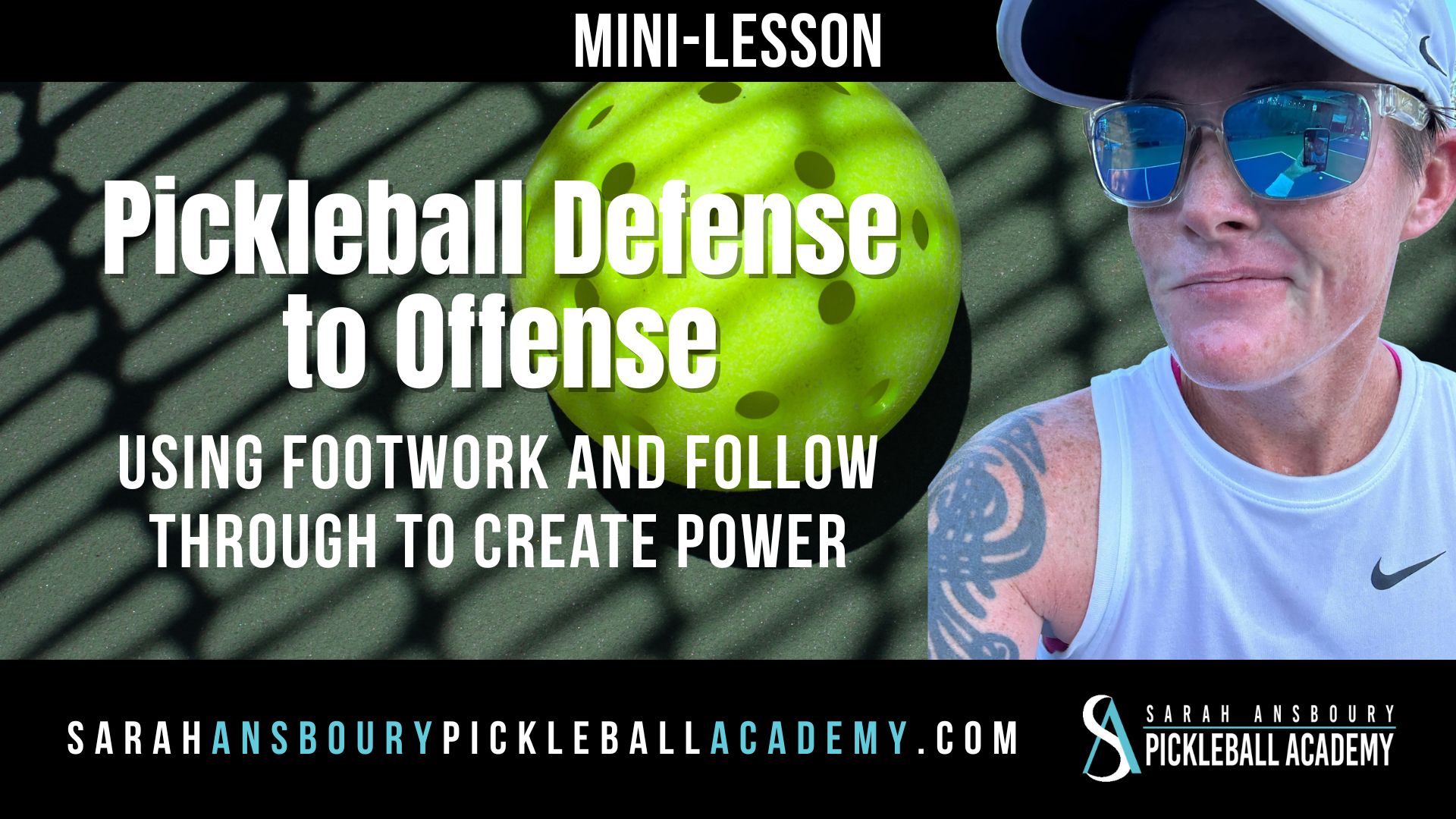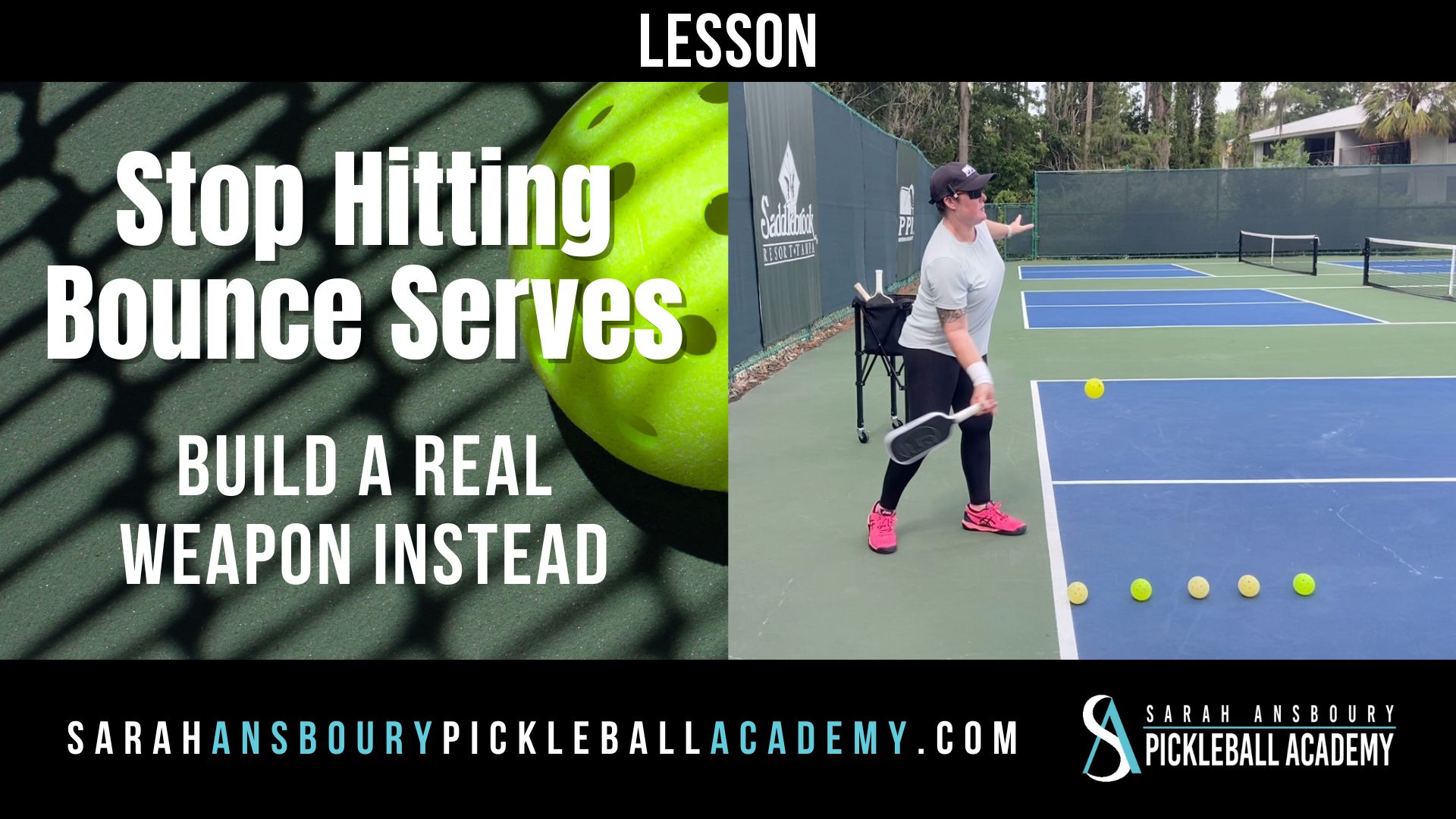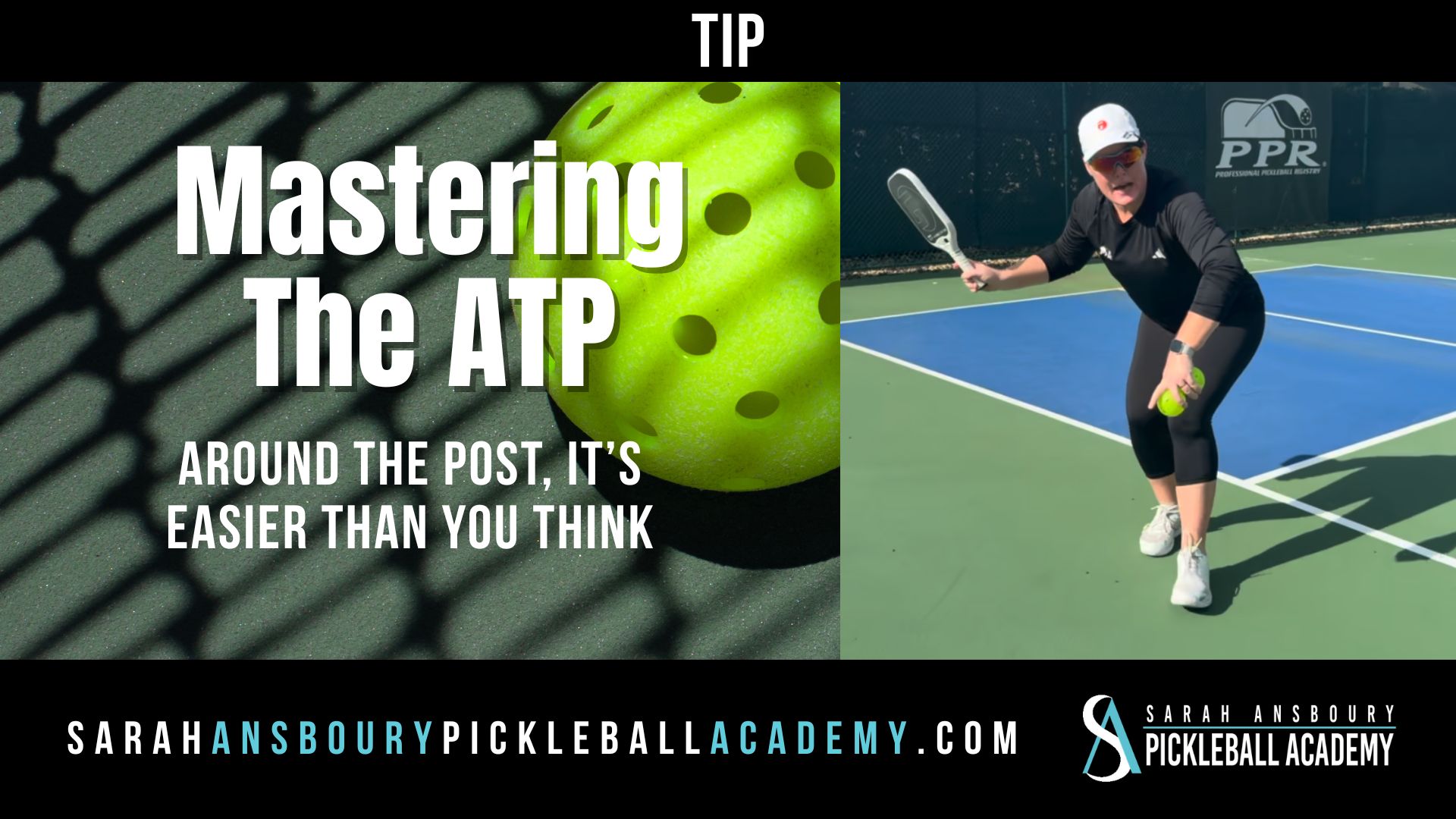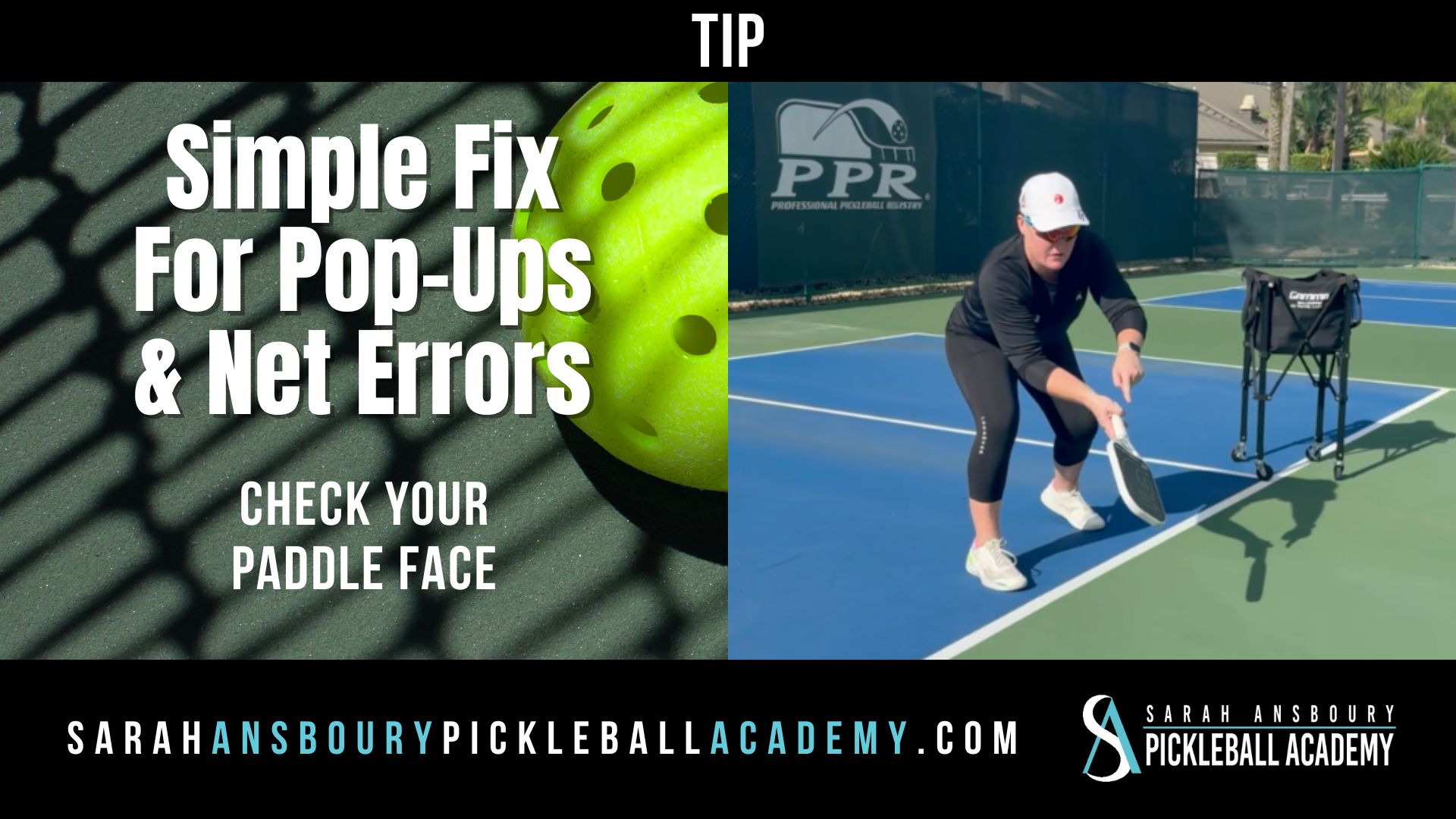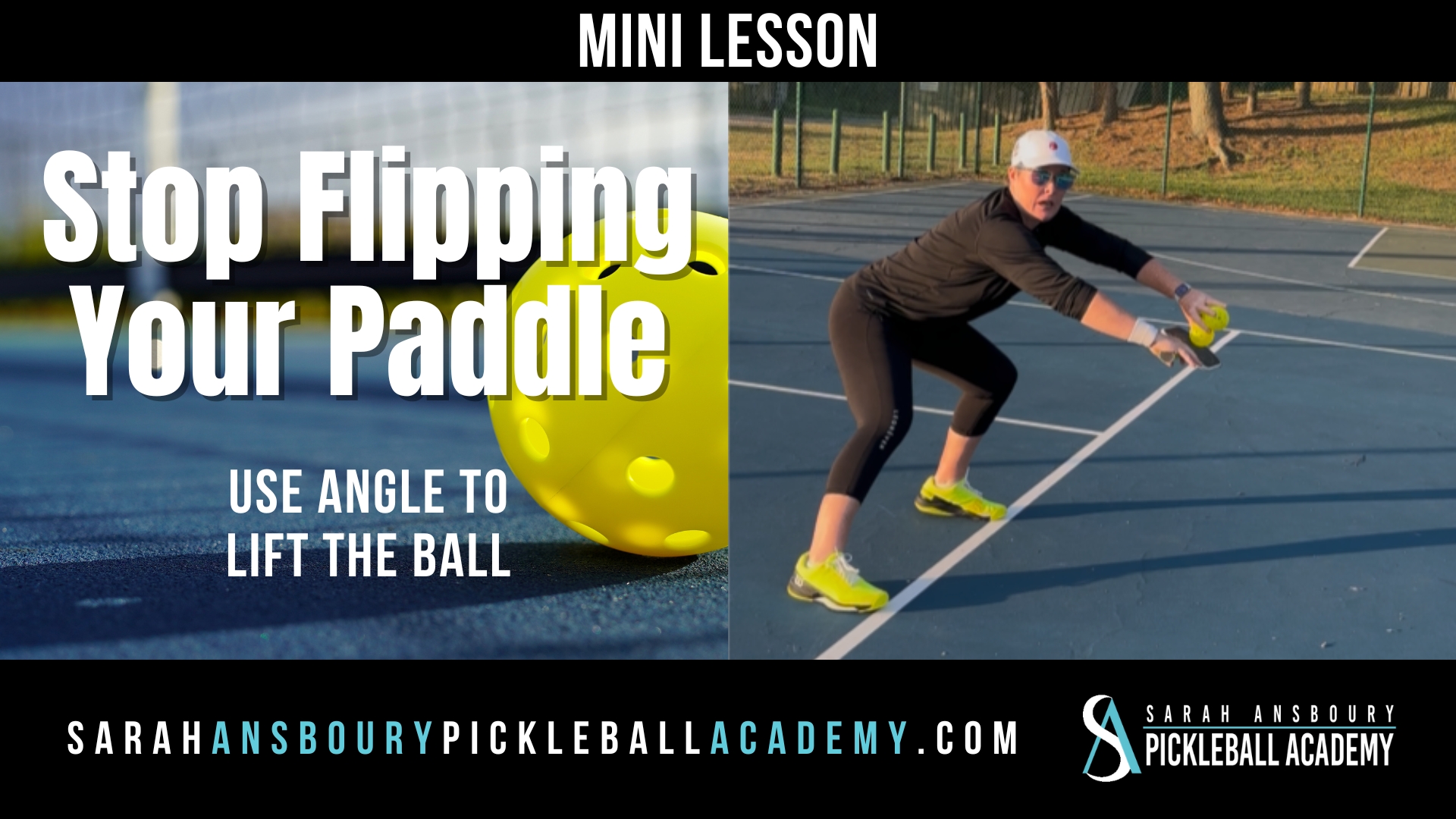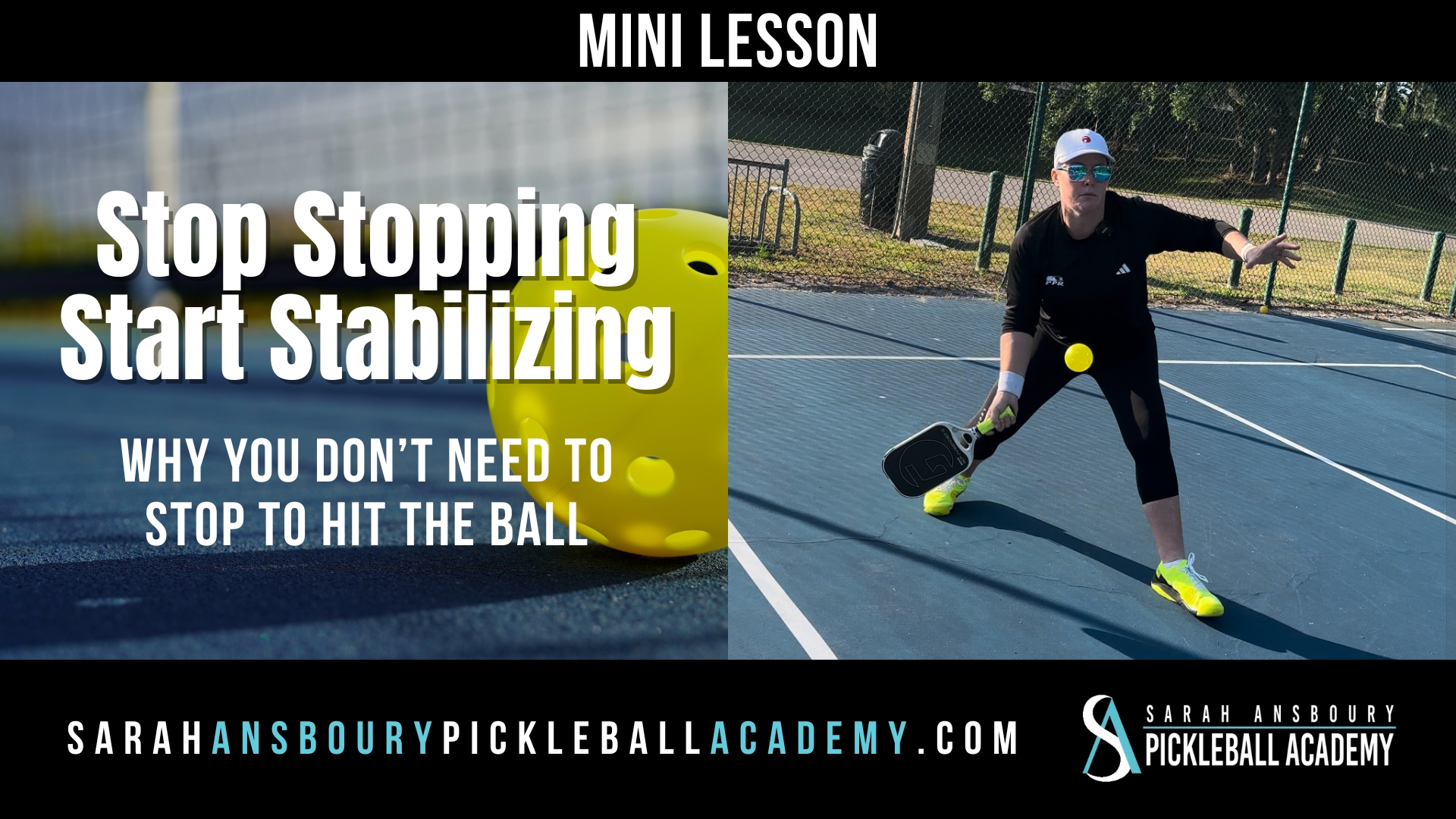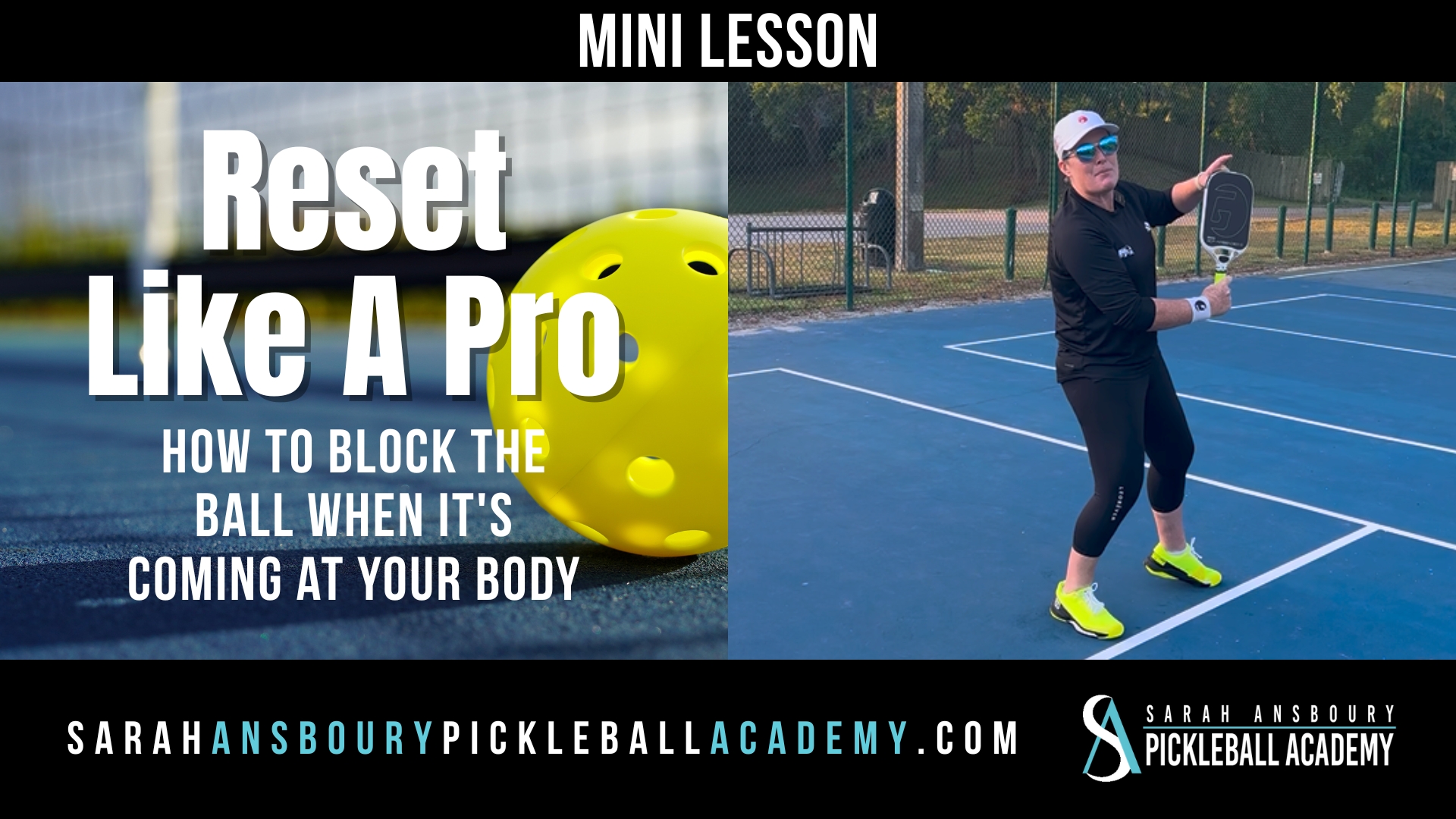Hey everyone, Sarah Ansboury here! Today, I want to talk about something that could transform your movement on the pickleball court: turning your toes. It’s such a simple adjustment, but it has a huge impact on your speed, balance, power, and even injury prevention. Let’s break it down.
Why Turning Your Toes Matters
When you turn your toes toward the ball, it naturally engages your hips. This simple motion does so much for your game:
- Prevents injuries: Shuffling side to side creates unnecessary friction and strain on your ankles, knees, and joints. Turning your toes eliminates that stress.
- Increases speed: By turning and stepping, you can cover more ground in fewer steps.
- Improves spacing: It helps you avoid overcrowding the ball and creates better positioning for your shots.
The Problem with Shuffling
Let’s address a bad habit so many players fall into: shuffling. It’s an outdated way of moving on the court, and here’s why:
- It’s inefficient: Shuffling takes multiple small steps to cover the same ground you could reach with one proper step.
- It limits your range of motion: Shuffling keeps your body square to the net, which means no rotation, no weight transfer, and no power.
- It’s hard on your body: All that friction wears down your joints over time.
If you’re shuffling to “keep the ball in front of you,” it’s time to rethink that approach. Instead, focus on turning your toes to position yourself effectively.
How to Turn and Step
Here’s how you can replace shuffling with proper movement:
Moving to the Ball on Your Forehand Side
- Turn your right toe toward the ball.
- As you step out, release your weight onto that foot.
- Engage your lower body by bending your knee slightly and using that leg to lift through the shot.
By turning your toe and shifting your weight, you’re not just reaching the ball—you’re in a position to hit with balance, power, and control.
Moving to the Ball on Your Backhand Side
- Turn your left toe toward the ball.
- Step out and transfer your weight.
- Use your leg to lift through the shot, creating a smooth follow-through with topspin.
The key is to avoid lunging. Instead of overextending and losing balance, focus on engaging your lower body and allowing your weight to flow through the shot.
The Importance of Weight Transfer
One of the biggest mistakes players make is keeping their weight 50/50—equally distributed between their feet. The problem? There’s no clear direction for your movement or power.
When you step toward the ball, your weight shifts to your front foot. This allows you to:
- Release your weight effectively.
- Create forward momentum for the next shot.
- Engage your kinetic chain for more power and control.
Why This Matters for Your Shots
Turning your toes and transferring your weight sets you up for better shots, whether it’s a dink, a volley, or a groundstroke.
- For dinks: Turning and lifting with your leg creates a nice arc and even adds topspin to your shot.
- For volleys: Turning your toe engages your hips and shoulders, giving you more range of motion, swing speed, and follow-through.
This forward motion also means you’re always in position for the next shot, eliminating the need for unnecessary extra steps.
The Takeaway
Shuffling and staying square to the net keeps you locked up—no rotation, no power, and no efficiency. By simply turning your toes, you engage your entire body, protect your joints, and improve your movement.
So the next time you’re on the court, ditch the shuffle and focus on turning, stepping, and transferring your weight. You’ll feel more balanced, move more efficiently, and unlock more power and control in your game.
See you on the courts!

